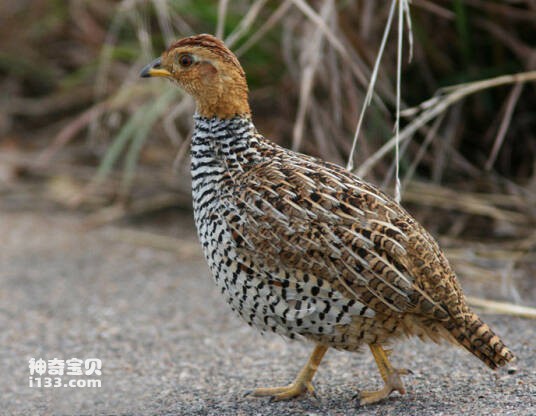Peliperdix coqui
IUCN
LCBasic Information
Scientific classification
- name:Peliperdix coqui
- Scientific Name:Peliperdix coqui,Coqui Francolin
- Outline:Landfowl
- Family:Chickeniformes Pheasants F.Partridges
Vital signs
- length:About 25 cm
- Weight:218-289g
- lifetime:No textual research information is available
Feature
Distribution and Habitat
It is distributed in Angola, Botswana, Burkina Faso, Burundi, Congo, Democratic Republic of Congo, Ethiopia, Gabon, Kenya, Malawi, Mali, Mauritania, Mozambique, Namibia, Niger, Nigeria, Rwanda, South Africa, Eswatini, United Republic of Tanzania, Togo, Uganda, Zambia, Zimbabwe.
It can inhabit areas up to 2200 m above sea level. It generally lives in wooded meadows, with shrublands growing on sand dunes. Savanna, burned land and shrub land.
Appearance
The partridge is 25 cm long and weighs 218-289 grams. There are four subspecies. The sexes differ in the pattern of the head, and the males are spaced. The male's throat, face, and sides are ochre, contrasting with the lighter parts of the underbody. The crown and nape of the neck are darker. The hindquarters are partially black from the base of the neck to the sides, more intense in the center of the chest and wider on the flanks. The top is taupe with delicate pale yellow stripes. The top of the tail is reddish-brown. In addition to the tawny breast, the female also has a striped bottom. The pattern covering the head is also very different: the white throat is surrounded by a black stripe that reaches to the eyes and meets the crown. Subadult birds resemble female birds without markings on the upper body. The markings on the decorative underbody are lighter, narrower and less noticeable on a yellow background. Beak black, base yellow; Iris brown; Legs yellow.
Details
The partridge (Peliperdix coqui) is known as Coqui Francolin and has four subspecies.

Living in pairs or in small groups, chestnut partridges are wild birds that do not fly unless they are in danger, but if they feel in danger, most of the time, prefer to run around rather than take a forceful flight. He usually crouches down and adopts a fixed posture. Rest on the ground. Their gait is very characteristic, slow, leg bent half, the body is low, but the top of the head is resolutely erect. The genus species is well suited to living in arid regions and seems to have little dependence on permanent ponds. This genus is a land bird that feeds on insects, plant matter and seeds.
Listed on the International Union for Conservation of Nature (IUCN) 2016 Red List of Threatened Species ver 3.1 - Not Threatened (LC).
Protect wild animals and eliminate wild meat.
Maintaining ecological balance is everyone's responsibility!








